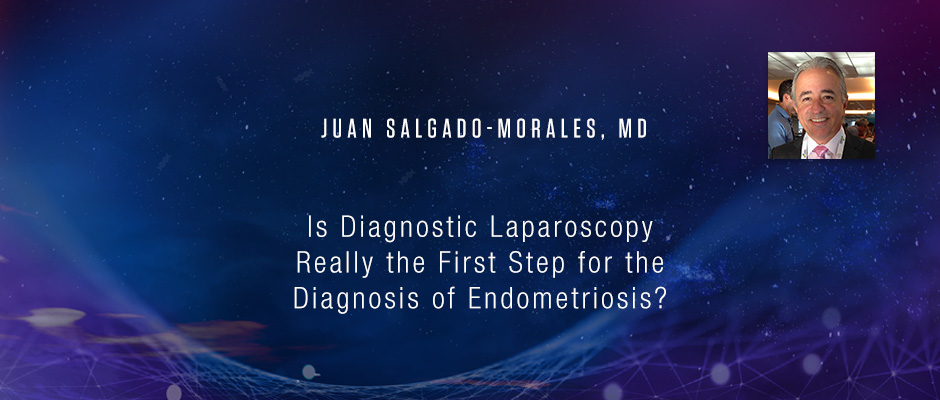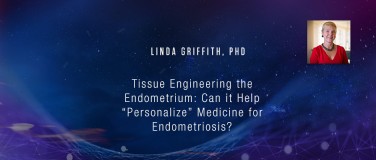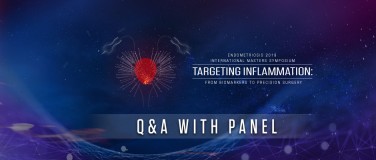Juan Salgado-Morales, MD - Is Diagnostic Laparoscopy Really the First Step for the Diagnosis of Endometriosis?
Endometriosis Foundation of America
Medical Conference 2019
Targeting Inflammation:
From Biomarkers to Precision Surgery
March 8-9, 2019 - Lenox Hill Hospital, NYC
https://www.endofound.org/medicalconference/2019
I want to thank the organizing committee for the invitation, and let me share what we're doing in San Juan, Puerto Rico lately. Check here.
These are my disclosures.
We know that endometriosis is, for me, underdiagnosed, and the prevalence is more, what we have seen lately. I heard one of the speakers says it could be up to 20%, and I think that could be correct because I think we are misdiagnosing or not doing the correct diagnosis, and most of the patients delay almost to 10 years to be diagnosed. The average age of this patient is 28 years old when they for the first time have a diagnosis of endometriosis.
We have many theories that we have debating today: the retrograde menstruation, HOXA genes. This is a very good paper that was presented in December 2018. Dan Martin is here. It's a very, very good paper and I think that it's explained a lot of what we did not understand for many, many years. At the end of the presentation, I would talk just a little bit more about this one.
The most frequent presentation of the patients is dysmenorrhea, dyspareunia, infertility and all the things that all of you know most, but most of the patients that we see at the office, the young patients, they present with dysmenorrhea. That is the most common presentation, and the pediatric doesn't see it. Pediatricians don't see that the patient have something that is not normal and never refers to the patient. Sometimes they see 5 to 10 doctors before somebody thinks, "Oh, this could be endometriosis. We can help this patient."
We know, Dr. David Redwine, that laparoscopy is the best things to a definitive diagnosis, having pathology and identify that the patient has glandular tissue in the stroma tissue. Sometimes if we go directly to do the laparoscopy, probably, we're dealing with some superficial endometriosis or we can miss something. We're really working with the tip of the iceberg because we didn't do a correct preoperative evaluation or we didn't really do good work up to this patient. In those days when all these incredible doctors: Dr. Redwine, Dr. Dan Martin, Harry Reich, [Seway Lu 00:03:01], [Charge Coe 00:03:03]; they were doing those surgeries without the aids of sonography. That is what we use right now. It was very, very impressive and very brave from them to do that without any, any help that we have now.
As we know, there are many other things that cause pain in the pelvic area. I told my patients, "Everything that glitters is not gold." You can have all the conditions that could be either causing the pain, or it could be concomitant with the endometriosis pain. We have to identify not only that this patient could have endometriosis, but we have to identify that she could have another condition that would be also giving the pain.
When I explain to my patients, I give like a little lecture. I spend probably like one hour or more for $15. That what we get paid in Puerto Rico to see a patient, but you have to do the work. It doesn't matter how much they pay. That patient could be my sister, my wife, my daughter, so you have to really try to diagnose and help the patient. I explain to my patient, "You have superficial endometriosis, you have deep endometriosis, you can have endometriosis in the ovary, on the bladder, or you can have adenomyomas." I give like a little lecture to all these patients, so they could understand because if they understand they could follow all the treatment very well.
To talk a little bit about what we do. It's the most important thing now to diagnose deep endometriosis. We know about sonography. This is a peril. Everything that comes in medicine usually has come from the war, and sonography was also that. It came from the First World War. They use the sonars to identify the submarine, so many of the equipment that we use today come from the war.
This is the most important paper that really I think changed everything when Mauricio Abrao in 2007 present that with a simple, endovaginal sonogram with three enemas at the office, he can diagnose deep endometriosis in the retrocervical area and in the bowel.
This is when he compared this study with MRI and looked at results that are completely, Completely different. We don't have to go for an NMRI to do the diagnosis of deep endometriosis.
This is another study that was done for, compare all different, it was like a Cochrane review, with all in different languages, just to confirm that endometriosis, deep endometriosis is diagnosed with transvaginal sonography.
You can see in sonogram when you do it at the office, you can see all the layers. Let me check, where's that? All the layers of the bowel and you can identify if the patient has a lesion, it's only superficial in the serosa or you can identify the distance from the anal verge, so we can predict if we're going to have an ileostomy or not or a colostomy in these patients just before we go to the surgery.
We can predict if it's going to do a disco resection, shaving off the lesion, or we going to do a segmental resection because we know the circumference of the bowel that is involved with endometriosis lesion. It's very important for us to know that prior to going to the OR.
We can identify the septovaginal rectum perfectly and identify the lesions there. That's why when I talk in the morning a little bit about if I don't find the lesion, I call my sonographers, come back to the OR, look for that lesion because I'm going to take it out. I do only one surgery, and it's a complete surgery.
We can see lesions on the bladder.
As we know, ACOG says that we have to use a variety of our medical options first before we start to think about doing surgery. ASRM said that endometriosis is best viewed as a medical disease with a surgical condition, with a surgical backup, but we didn't have any data to sustain that. We decided in our office to see if we can do something to confirm that that was true.
In 2011 at the World Congress on Endometriosis, we presented the target organs sonography score. That it's a preoperative evaluation with sonography.
It was a prospective study at that time.
We do a score that we compare with the ASRM laparoscopy staging.
These were the results. We have a very good correlation. Not only that we can find the lesions, identify them and put on mapping, but also we can predict the complexity of the surgery. If I tell the doctor that referred the patient to us, "You cannot do this surgery. It's going to be very complicated. You're going to open, you're going to do the laparoscopy, you're going to go away, refer the patient to have the complete surgery with us and then we refer you the patient back."
We decide to do does diagnostic laparoscopy is really necessary as the first line of evaluation. It's a prospective study. The chief complaint was dysmenorrhea, dyspareunia.
This patient has 10 out of 10 in the VAS score. Some of the new [inaudible 00:09:10] said I have 20 out of 10, and you know that you can see that easily in your office. They have to be absent from school or from work, they need narcotic for pains, they visit the emergency room and their goal is to resolve the problem, not to become pregnant.
We do the sonogram first to rule out any deep endometriosis and do a complete examination of the patient.
This is the algorithm that we develop. We do the sonogram. If the sonogram is negative, we eval this patient for IC, for pudendal neuralgias, constipation, for IBS, and then we put the patient on the protocol. If we identify any other condition, we treat the other condition either concomitant or if it's the one that is causing the pain, we put the patient in the protocol. If the Sonogram is positive for deep endometriosis but is not causing harm to the patient, we go directly to the protocol, but if the patient needs surgery, we refer the patient to the division of the office to do the surgery.
The protocol has put the patient without menses either with oral contraceptive without the placebo, IUD progesterones, vaginal rings or progesterone pills.
These are the patients.
We have right now at 121 patients. We have to stop a little bit because when Maria hit Puerto Rico, my office was closed like around six months, so we have to stop the recruiting patients, but so far we have 121 patient. 5 are pending to do the sonogram evaluation. Sorry. 44 are pending to be reevaluated after they start the treatment. 72 have been evaluated without menses with the treatment that we have here.
This is a score of the TOS. Most of them have zero, so they don't have anything of deep endometriosis, no bowel lesions, nothing.
This other diagnosis that found with a patient of adenomyosis; adenomyosis and IC; IC, IBS, and constipation; IBS and constipation; IC. Adenomyosis, some of them had already a laparoscopy, but they don't find anything, but they still have the pain every month.
This is the type of treatment that we gave. Most of them are in oral contraceptive without the placebo.
This is the result now that we have so far: 86% of those 72 patients never been absent again to school, never been in the emergency room, never used narcotic. Only 40% have some breakthrough bleeding or have minimal pain during the cycle, and they don't need even a Tylenol to resolve that problem.
We do an evaluation of the patients every three months times two, and we repeat the sonogram in six months. We have direct communication with all these patient. They all have my cellular number, my personal cellular number, so if they have any doubt or any complication with the medication they're using, they have to call me. It doesn't matter the time. I think that compliance depends on the understanding of the patient. If they understand what they're doing, they're gonna follow instructions, and if they have any doubt, they're going to call you. The results are the ones that you have seen here.
The take-home message that I want to give all of you is that still, the sonogram is the best to diagnose deep endometriosis. We have to rule out other conditions that could be concomitant with the endometriosis or that are the cause of the pain.
Diagnostic laparoscopy should not be the first line of treatment.
If you're going to do surgery, you don't go blind. Now, we have the sonogram that you can do a map, you can identify the lesions and you can help this patient much better than we used to do it before.
It's a teamwork. I do the surgery with a colorectal surgeon or a GY-ONCO and also with a urologist.
If we do have to have surgery for the patient, we only have one surgery. That's our goal for them.
In the future, I think that epigenetic, it's a very good topic. I think what I explained to my patients is that it's like if a composer writes a song, he wants to be played in one form, so epigenetic would change the ways some people will play the song, and we want the song is playing with endometrium and not endometriosis. I think that if we can work in the expression of the genes, probably we can have some cure in the future that will help all patients.
This is my family that been helping me to go through all the work every year. They're taking the message of endometriosis.
This is what I have for you, we're doing in Puerto Rico. Thank you so much.










